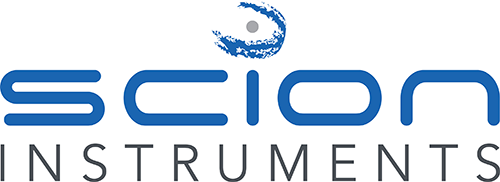Principles of Headspace Analysis
What is Headspace Analysis?
Headspace analysis is a flexible sample preparation technique used to extract Volatile Organic Compounds (VOCs) from a variety of liquid and solid matrices. The SCION Versa and HT3 headspace samplers provide automated headspace sampling with direct injection into a Gas Chromatograph (GC).
Principles Of Headspace Analysis
Headspace samplers can be configured to either static mode or dynamic mode, depending on the model.
Static Headspace
The Versa and HT3-Static samplers are configured for static mode operation. Static headspace samples the gas phase (or headspace) of a sample. Static analysis is comprised of three basic principles:
1) Sample Equilibration
The sample is placed within a headspace vial and sealed. The vial, and sample, are heated so the target compounds are released from the matrix into the gas phase of the vial. The temperature and duration of the heating is optimised to ensure equilibrium of the target compounds migrating to the gas phase is achieved.
2) Sampling
Once equilibrium is reached, a portion of the sample is taken via the sampling needle. A small volume of gas is added to pressurize the sample prior to sampling. The sample is transferred to a sample loop via a solenoid valve and 8-port valve.
3) Injection
Once the sample loop has been filled, the sample is injected into the inlet of the GC. The sample flows through the GC as usual, with separation and detection occurring. The headspace sample pathway is then swept with inert Helium to remove any contaminants.
Dynamic Headspace
The HT3-Dynamic sampler is configured for dynamic mode operation. Dynamic mode provides greater sensitivity over static mode as the sample is swept with inert gas.
There are three main principles of dynamic analysis:
1) Sample Sweep
The sample is placed in a headspace vial, and sealed. It is then continuously swept with inert gas, moving the target compounds from the matrix onto an adsorbent trap. This provides a more efficient extraction compared to static mode as equilibrium into the gas phase isn’t required.
2) Desorption
Once the trap has been loaded with the target compounds, it is heated. The heated trap releases the compounds (desorption) where they are transferred to the GC, via the carrier gas. The desorption time and trap temperature must be optimised to ensure efficient release of the target compounds from the trap.
3) Bake
After all target compounds have been released from the trap, the trap temperature will be elevated and the headspace system flushed with inert gas. This removes any contaminants and prepares the headspace for the subsequent injections.
Static or Dynamic Headspace
Both modes of headspace provide benefits over other sample preparation techniques including elimination of multi-step sample preparation and requires low system maintenance due to clean sample extracts. Static headspace analysis offers high sensitivity for low boiling point compounds whereas dynamic headspace enables a concentrated analysis for superior trace level detection.
For additional information on static or dynamic headspace, refer to our ‘Static or Dynamic Headspace Analysis’ technical note.
Find out more about headspace sampling and the SCION range.
